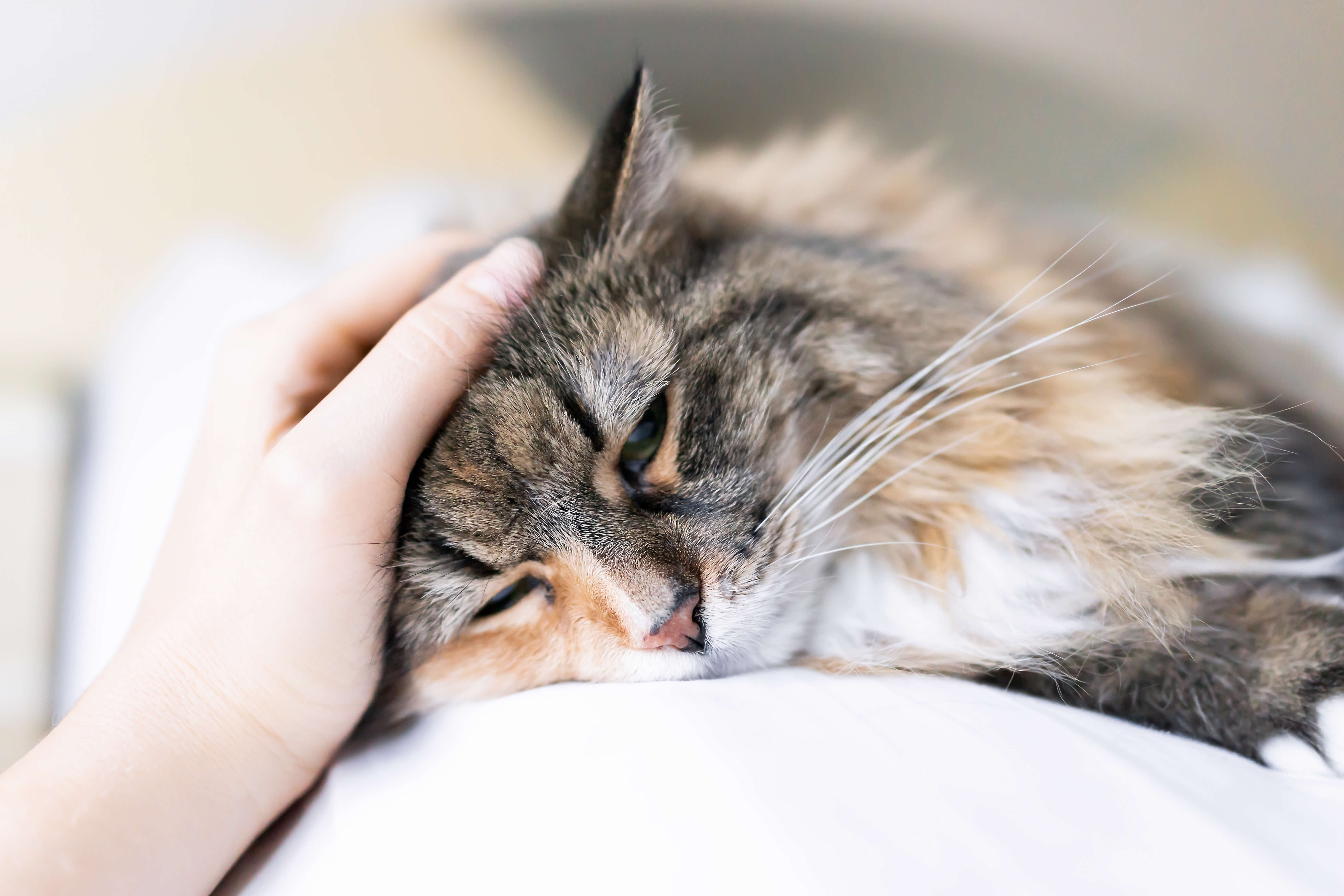Signs Your Cat Is in Pain
September 1st, 2019
 Cats are masters at masking their pain. It can be extremely challenging to recognize symptoms that something is off with your kitty. While some cases are quite obvious such as limping or injuries, other signs of pain can be far more subtle. Following are some tips to help you recognize cat pain symptoms early on and get your feline friend the needed help.
Cats are masters at masking their pain. It can be extremely challenging to recognize symptoms that something is off with your kitty. While some cases are quite obvious such as limping or injuries, other signs of pain can be far more subtle. Following are some tips to help you recognize cat pain symptoms early on and get your feline friend the needed help.
Signs Your Cat Is in Pain
A cat in pain will often display behavioral changes that serve as tips to pet parents that something is off. Cats may hide more often, may have a general decrease in energy and activity levels, and may begin to lose their interest in people, other pets, or their favorite activities. They may neglect to groom themselves or may start over-grooming in specific areas. Hurting cats may be restless or aggressive, or may begin to purr and meow excessively.
Other signs of pain include breathing changes, unusual vomiting, a loss of appetite, changes in drinking habits, clingy behavior, or other noticeable changes in your cat’s personality and demeanor. Pain may cause a cat to stop using the litter box because it is uncomfortable to get into it. You may also notice that your kitty stops climbing or jumping onto favorite hideouts.
How Cat Parents Can Help
Cats in pain may be more likely to bite, so be careful. Pay attention to your cat’s behavior, breathing, heart rate, and even appearance changes. You know your cat best, so if you notice something that doesn’t seem right, a visit to the veterinarian is probably warranted. Never give your cat any medication unless instructed to do so by your vet.
Some ways to help your cat is by relocating the bed, food dishes, water bowls, and the litter box to easily accessible areas. Make sure the litter box is easy to climb in and out of. You may want to replace a litter box with deep sides or a lid for one with an open, shallow structure. Keep young children or other pets away from your cat until you determine what is going on.
Keep in mind that prevention is the best approach. As the saying goes, an ounce of prevention is worth a pound of cure. Routine annual veterinary exams and a well-balanced diet will go a long way toward preventing your cat from developing a painful condition.
Quality, Gentle Feline Care in Kirkland, WA
Contact All About Cats Veterinary Hospital to learn more about preventative care for your furry friend. In the event you suspect your kitty is in pain, make sure to contact us immediately to ensure we diagnose and treat any condition before it progresses. You can always count on us for quality, purr-fectly compassionate care!
Recent Posts
-
The Best Cat Trees and Scratching Posts for Every Budget
October 31st, 2025
-
Halloween Cat Safety Tips: Avoiding Spooky Situations
October 1st, 2025
-
Cat Vaccinations: The Ultimate Guide
September 3rd, 2025
-
Feline Dental Care: How to Brush Your Cat’s Teeth
August 8th, 2025
-
Solving Litter Box Problems: What Every Cat Owner Needs to Know
July 1st, 2025
-
How to Stop Unwanted Scratching Without Declawing
June 17th, 2025
-
Signs Your Cat Might Need a Vet Visit
May 14th, 2025
-
DIY Cat Toys: Easy Projects to Keep Your Kitty Entertained
April 15th, 2025
-
Why Does My Cat Knead? Exploring This Adorable Behavior
March 10th, 2025
-
How to Keep Your Indoor Cat Healthy and Active
February 10th, 2025
-
How to Transition Your Cat to a New Diet Without Stress
January 14th, 2025
-
Essential Tips for First-Time Cat Owners
December 18th, 2024
-
How Do I Know if My Senior Cat Is in Pain?
November 1st, 2024
-
Common Misconceptions about Feral Cats
October 9th, 2024
-
Nutritional Needs of Cats: A Veterinarian’s Perspective
September 9th, 2024
-
Even Healthy Cats Need Vet Visits: Here’s Why!
August 1st, 2024
-
Summer Safety Tips for Cat Owners
July 11th, 2024
-
The ABCs of Cat Vaccinations – What Every Cat Owner Should Know
June 5th, 2024
-
Preparing for Travel With or Without Your Feline Friend
May 3rd, 2024
-
How to Feed Cats in a Multiple-Cat Household
April 8th, 2024
-
8 Tips to Get Your Cat in a Carrier
March 5th, 2024
-
Help, My Cat’s Breath Smells!
February 5th, 2024
-
A Quick Guide to Coping with Cat Emergencies
January 8th, 2024
-
Traveling for the Holidays? 6 Things to Do Before Leaving Your Cat
December 14th, 2023
-
What Is Catnip and Is It Safe for Your Cat?
November 2nd, 2023
-
5 Tips for New Cat Owners
October 5th, 2023
-
How Often Should My Cat Have a Health Check?
September 7th, 2023
-
Cat Hairballs – What Do I Need to Know?
August 4th, 2023
-
How to Play with Your Cat: Fun Cat Activities
July 4th, 2023
-
What to Know About Your Cat’s Surgery
June 10th, 2023
-
Licensed Veterinary Technician or Technician Assistant Wanted (Full time or Part time)
May 15th, 2023
-
Why, Oh Why, Does My Cat Hate Water?
May 9th, 2023
-
What’s Wrong with My Cat? Benefits of Whole-Body Radiology
April 5th, 2023
-
Should I Feed My Cat a Grain-Free Diet?
March 6th, 2023
-
Smelly Cat, Smelly Cat – Causes of Feline Odors
February 22nd, 2023
-
5 Ways to Reduce Cat Shedding
January 3rd, 2023
-
Your Cat’s Holiday Stress – How to Help
December 6th, 2022
-
Pet Cancer Awareness Month: Warning Signs to Look Out For
November 2nd, 2022
-
10 Halloween Safety Tips for Cat Owners
October 3rd, 2022
-
Why Is My Cat So Active at Night?
September 7th, 2022














